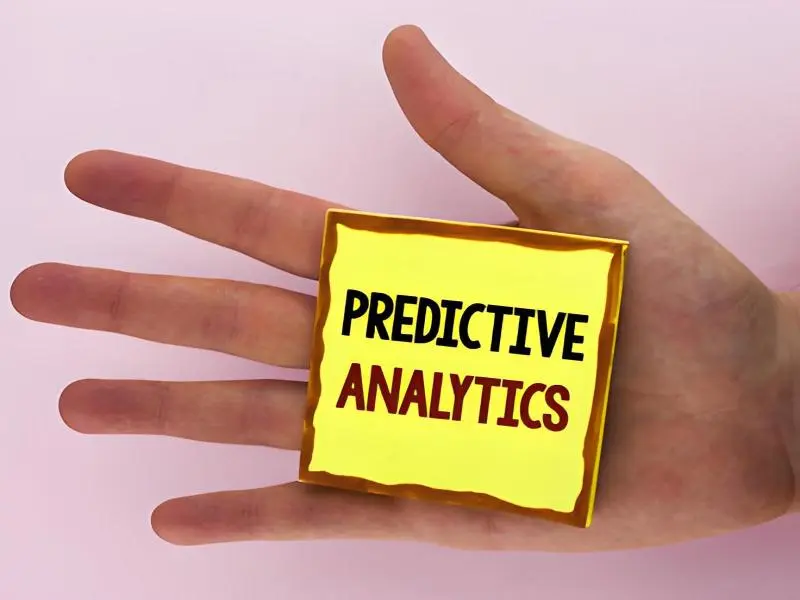- Predictive analytics uses data to forecast future trends, enabling strategic decision-making based on historical patterns.
- Predictive analytics is a powerful tool that is transforming industries by providing actionable insights and driving strategic decision-making.
Predictive analytics is a powerful tool that is transforming industries by providing actionable insights and driving strategic decision-making. By harnessing the potential of predictive analytics, organisations can gain a competitive edge, enhance operational efficiency, and deliver superior products and services to customers.
1. Finance: Forecasting future cash flow
Maintaining regular financial records is essential for any business, and predictive analytics significantly aids in anticipating the financial well-being of an organisation. By leveraging historical financial data and industry-wide information, businesses can forecast sales, revenue, and expenditure, thus painting a detailed picture of what lies ahead and informing strategic decisions.
Highlighting the significance of forecasting in the Financial Accounting Course, part of the CORe curriculum, HBS Professor V.G. Narayanan emphasises, “For managers, looking ahead is crucial for planning the future health of their business. Regardless of your industry, this process inherently involves considerable uncertainty.”
Also read: The crystal ball of the digital age: Predictive analytics
2. Healthcare sector: Personalising treatment plans
Predictive analytics can help hospitals make better use of resources and streamline processes to increase efficiency. By anticipating patient needs and potential complications, healthcare providers can proactively address issues before they escalate, leading to better patient outcomes and reduced healthcare costs.
With the continuous advancements in technology and data analytics, the healthcare industry is able to harness the power of predictive analytics to revolutionise the way patient care is delivered. By constantly refining and improving predictive models, healthcare organisations can stay ahead of emerging healthcare trends and meet the ever-evolving needs of patients and providers alike.
Also read: Hyperconvergence: The new frontier in streamlined IT infrastructure
3. Marketing: Behavioural targeting
In marketing, consumer data is abundant and leveraged to create content, advertisements, and strategies to better reach potential customers where they are. By examining historical behavioural data and using it to predict what will happen in the future, you engage in predictive analytics.
Predictive analytics can be applied in marketing to forecast sales trends at various times of the year and plan campaigns accordingly.
Moreover, analysing historical customer behaviour can forecast the probability of a lead progressing through the sales funnel, from initial awareness to eventual purchase. For example, employing a single linear regression model might reveal that the quantity of content interactions by a lead is a statistically significant predictor of their potential to become a customer. Armed with such insights, businesses can strategically deploy targeted advertising at key stages of the customer journey.
4. Manufacturing: Preventing malfunction
In addition to using predictive analytics for proactive decision-making as described earlier, another valuable application is in preventing potential risks or issues from happening. For example, within the manufacturing industry, predictive algorithms can be utilised to forecast when a machine is likely to breakdown based on historical data.
When the algorithm recognises the conditions signalling an impending malfunction, it sends a notification to a staff member who can intervene to halt the operation, potentially preventing significant financial losses in terms of damaged goods and repair expenses. This real-time analysis focuses on predicting breakdowns before they occur, offering immediate benefits rather than longer-term projections.
Furthermore, certain algorithms not only predict potential malfunctions but also suggest solutions and optimisations to evade future issues and boost operational efficiency, ultimately saving resources and enhancing productivity. This exemplifies prescriptive analytics, which often involves integrating multiple analytical approaches to address complex challenges effectively.

